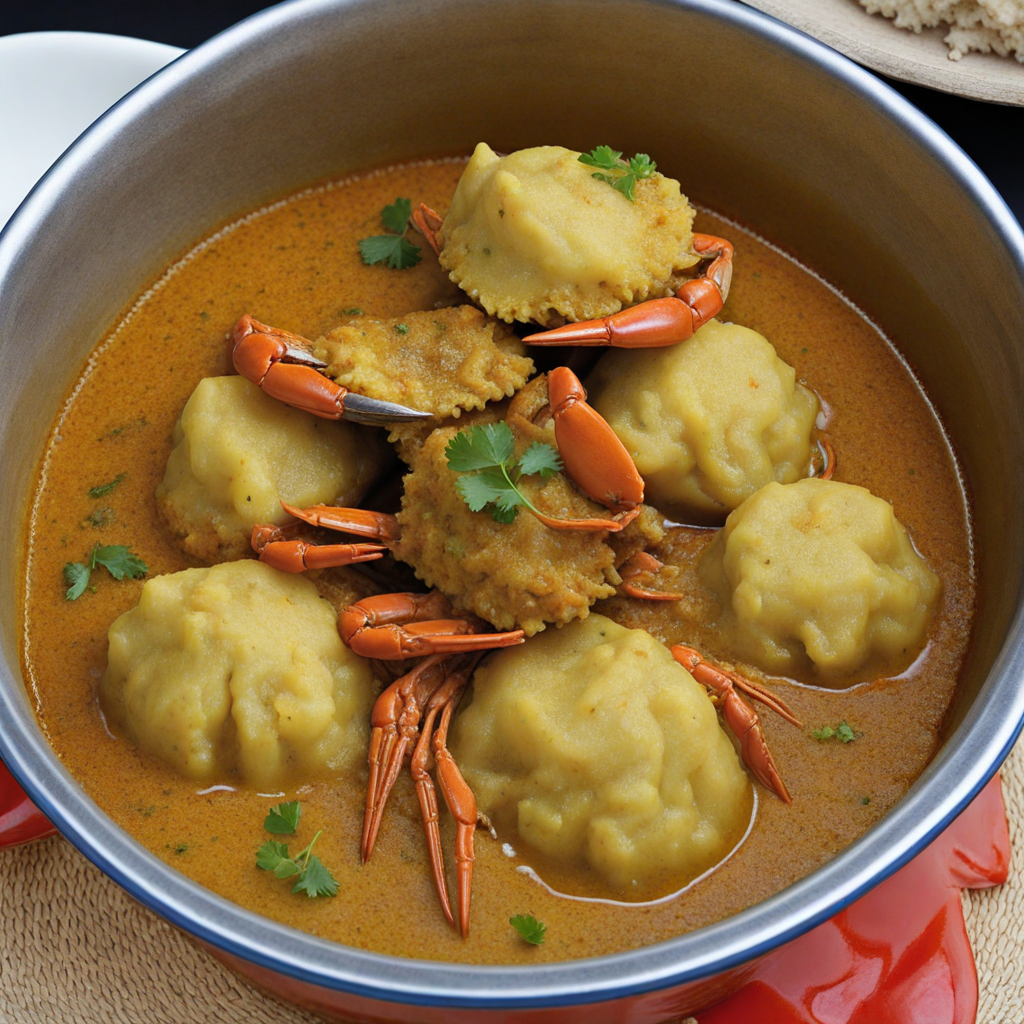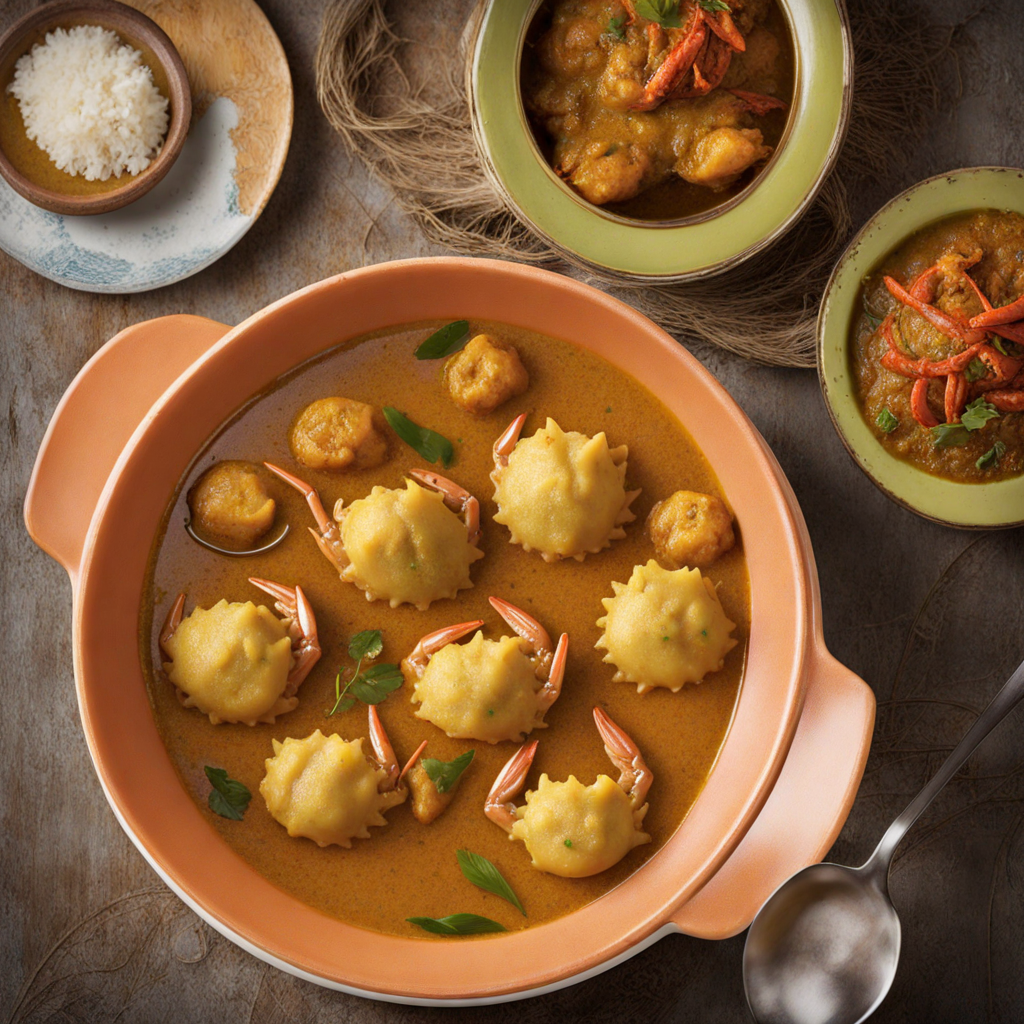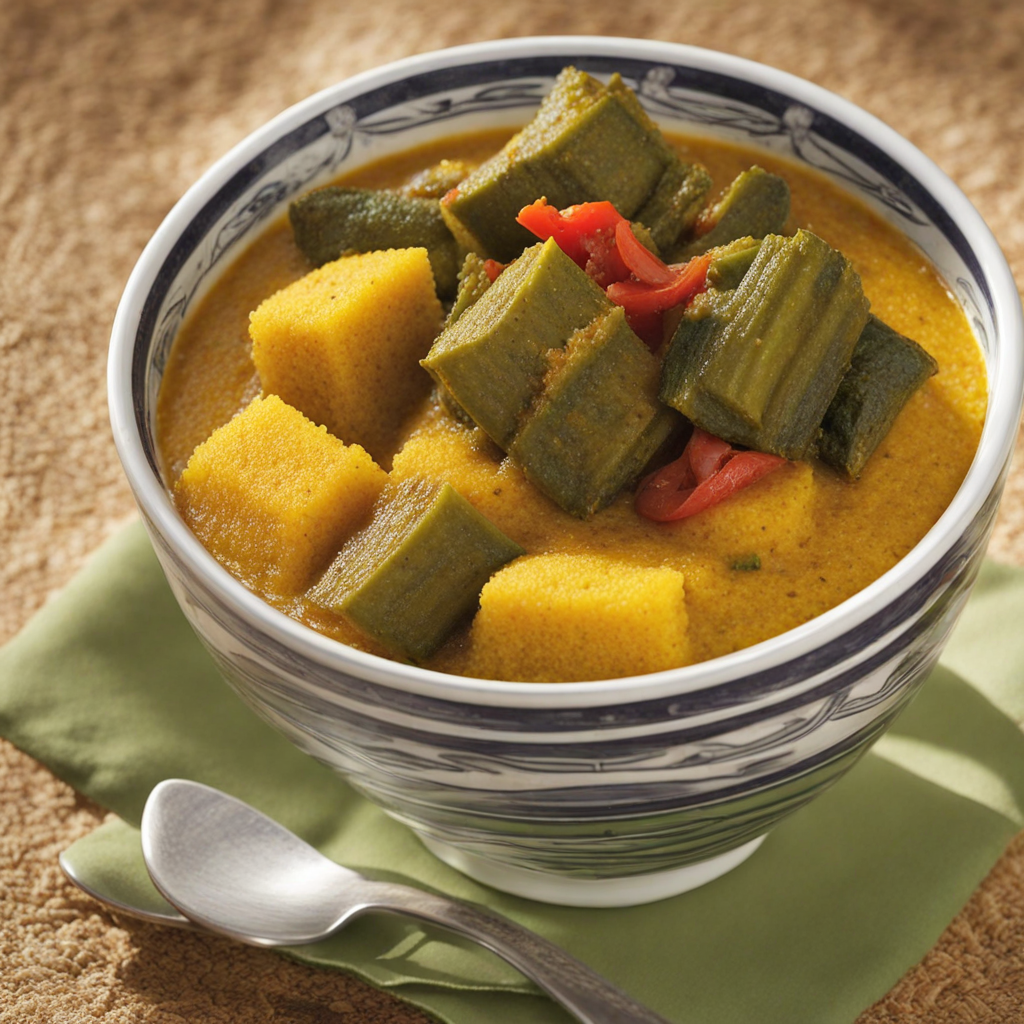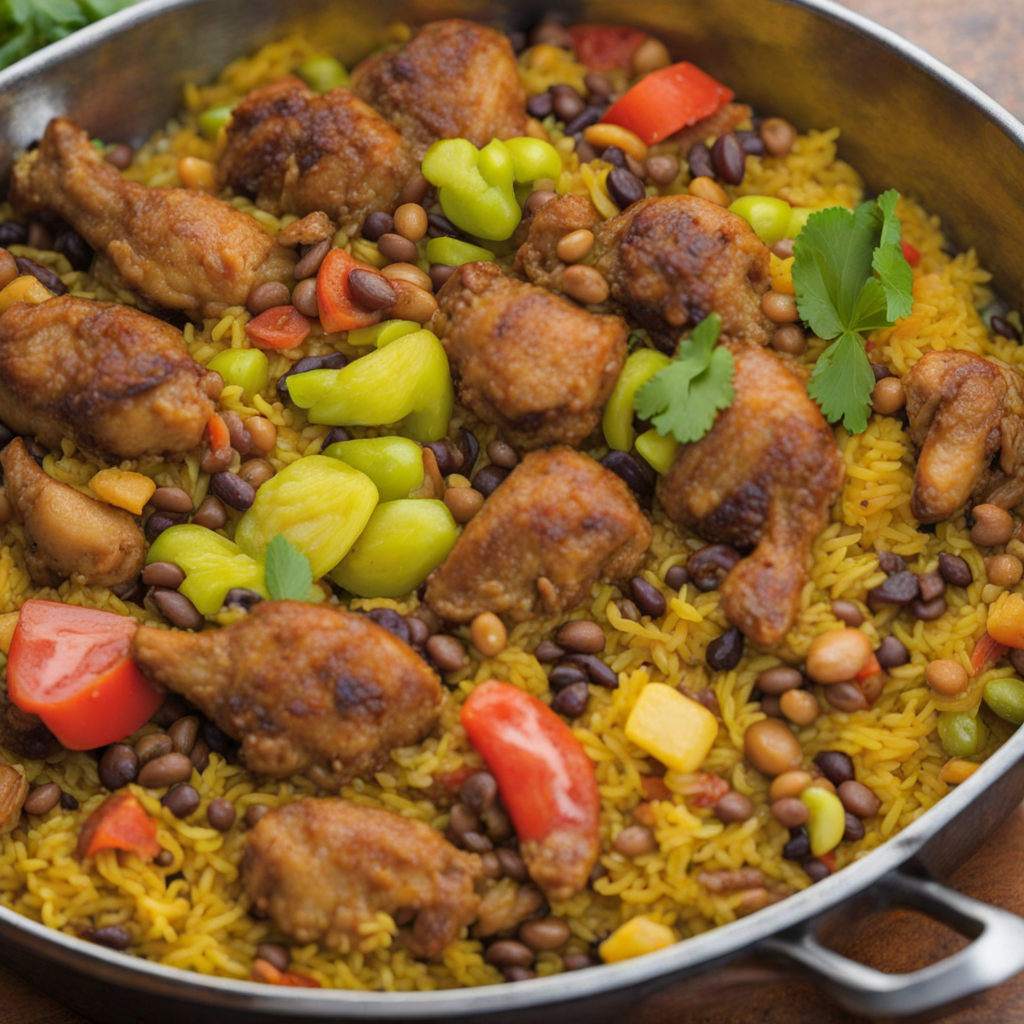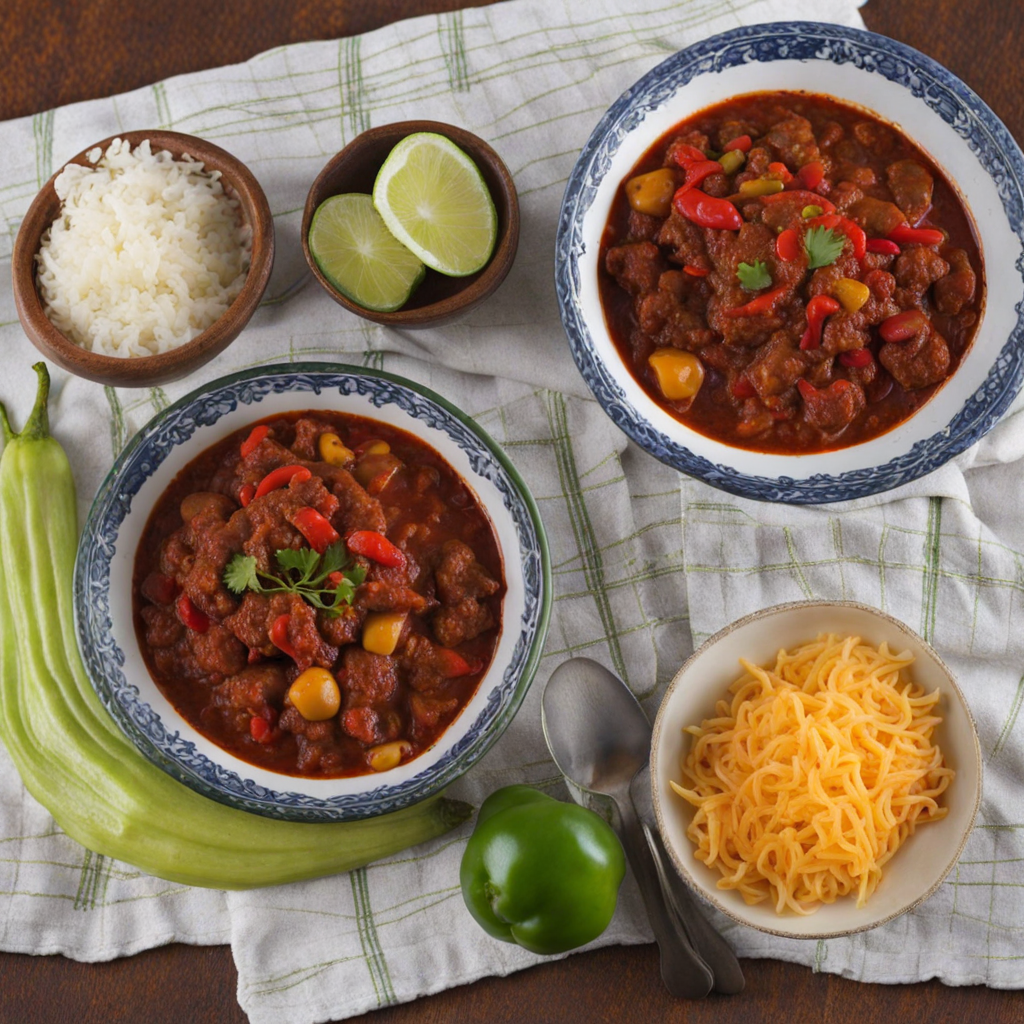Curry Crab and Dumplings
Curry Crab and Dumplings is a vibrant and flavorful dish that beautifully represents the culinary heritage of Trinidad and Tobago. The star of the dish is the succulent crab, typically blue crab, which is simmered in a rich, aromatic curry sauce. The curry is a delightful blend of spices, including turmeric, cumin, coriander, and freshly chopped herbs, creating a warm and inviting aroma that envelops the crab. The cooking process allows the crab to absorb the spices, resulting in tender meat that is bursting with flavor. The sauce is often enriched with coconut milk, adding a creamy texture that complements the spices and enhances the overall taste experience. Accompanying the curry crab are the dumplings, which are a staple in Trinidadian cuisine. These dumplings are made from a simple dough of flour, baking powder, and salt, kneaded to perfection and then boiled or fried until golden brown. They serve as the perfect vehicle for soaking up the rich curry sauce, making each bite an indulgent experience. The dumplings are slightly chewy on the outside, with a soft and fluffy interior that balances the bold flavors of the crab curry. What sets Curry Crab and Dumplings apart is not just its flavor profile but also the communal experience it fosters. This dish is often enjoyed during festive occasions or family gatherings, bringing people together to savor the rich tastes of Trinidad and Tobago. The combination of the spicy, aromatic crab and the comforting dumplings creates a symphony of flavors that is both satisfying and memorable. Each mouthful is a celebration of culture, showcasing the island's love for bold spices and fresh seafood, making it a must-try for anyone looking to explore new and exciting culinary horizons.
How It Became This Dish
The History of Curry Crab and Dumplings in Trinidad and Tobago Curry Crab and Dumplings is a beloved dish in Trinidad and Tobago, embodying the rich tapestry of the islands' culinary heritage. This dish not only tantalizes the taste buds with its vibrant flavors but also tells a story of cultural exchange, colonial history, and the melding of diverse culinary traditions. To appreciate Curry Crab and Dumplings fully, one must delve into its origins, cultural significance, and evolution over time. #### Origins: A Culinary Melting Pot The history of Curry Crab and Dumplings can be traced back to the complex interactions of various cultures that have influenced Trinidad and Tobago over centuries. The islands were originally inhabited by the Indigenous peoples, including the Arawaks and Caribs, who had their own methods of cooking, often utilizing local seafood and root vegetables. However, the true culinary transformation began with the arrival of European colonizers in the 15th century. The Spanish were the first to settle in Trinidad, followed by the British, who established control in the 18th century. This colonization brought about the introduction of new ingredients and culinary techniques. One of the most significant influences came from Indian indentured laborers who arrived in Trinidad in the mid-19th century. These workers brought with them their spices, cooking methods, and, importantly, the concept of curry. The blend of Indian spices with local seafood created a unique flavor profile that would eventually lead to the development of Curry Crab. The crab, typically blue crab in Trinidad, is often caught in the coastal waters and is a staple seafood in the islands. The practice of cooking crab with curry is believed to have originated from the Indian influence, where the use of spices in seafood dishes was common. Over time, this method became a local favorite, particularly in coastal communities where crabbing was a significant part of the fishing industry. #### Cultural Significance: A Dish of Celebration and Community Curry Crab and Dumplings is more than just food; it is a dish that signifies community, celebration, and heritage. In Trinidad and Tobago, it is often associated with gatherings, particularly during special occasions such as holidays, family celebrations, and festivals like Carnival. The dish is frequently featured at "liming" events—informal gatherings where friends and family come together to socialize and enjoy food. The preparation of Curry Crab and Dumplings is often a communal affair. Families come together to clean the crab, prepare the spices, and make the dumplings, fostering a sense of unity and togetherness. The act of cooking becomes a shared experience, where stories are exchanged, and traditions are passed down through generations. Moreover, the dish holds a place of pride in the culinary landscape of Trinidad and Tobago. It reflects the islands' identity as a melting pot of cultures, where African, Indian, Indigenous, and European influences converge. As a result, Curry Crab and Dumplings serves as a culinary representation of Trinidad and Tobago’s multicultural society, celebrated for its diversity and rich heritage. #### Evolution Over Time: From Traditional to Modern Interpretations As with many traditional dishes, the preparation of Curry Crab and Dumplings has evolved over time, influenced by changing tastes, availability of ingredients, and culinary trends. Traditionally, the dish was made with a simple blend of curry powder, onions, garlic, and local herbs, allowing the natural flavors of the crab to shine through. The dumplings, made from flour, water, and sometimes baking powder, were steamed or boiled until soft and fluffy, serving as a perfect accompaniment to soak up the flavorful curry sauce. In recent years, however, chefs and home cooks alike have begun to experiment with this classic dish, introducing new flavors and techniques while still honoring its roots. Modern interpretations may include the use of various spices, such as coconut milk or a touch of lime for added zest, enhancing the dish's complexity. Some chefs have also incorporated different types of crab or seafood, catering to diverse palates and preferences. Moreover, the rise of global culinary awareness has led to a renewed interest in traditional Caribbean dishes, including Curry Crab and Dumplings. Food festivals, pop-up restaurants, and culinary tours have showcased this dish, allowing it to reach a wider audience beyond the shores of Trinidad and Tobago. As a result, more people are becoming acquainted with the rich flavors and cultural significance of this iconic dish. Conclusion: A Dish to Be Cherished Curry Crab and Dumplings is a quintessential dish of Trinidad and Tobago, steeped in history and cultural significance. It reflects the islands' rich culinary heritage, forged through centuries of cultural exchange and adaptation. From its humble beginnings as a local seafood dish influenced by Indian cooking to its status as a celebrated symbol of community and tradition, Curry Crab and Dumplings continues to bring people together. Whether enjoyed at a family gathering, a festive celebration, or a casual lime, this dish remains a cherished part of Trinidad and Tobago’s culinary landscape. As the world grows more interconnected, the legacy of Curry Crab and Dumplings serves as a reminder of the power of food to unite us, telling stories of our past while nourishing our present and future.
You may like
Discover local flavors from Trinidad And Tobago


